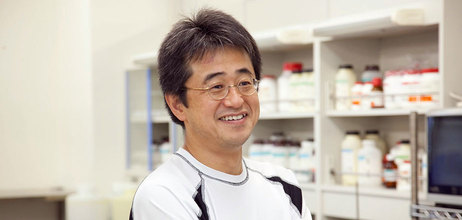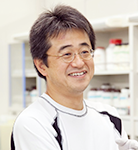Team Leader

- Polishing GEMs (Genetically Engineered Mice) -
As Tools to Understand the Dynamics of Animal Development and Bio-Function
* Due to the reorganization starting as new centers in April 2018, this laboratory is now belong to the Center for Biosystems Dynamics Research. As for the latest information, please see the following URL below.
> The webpage of Laboratory for Genetic Engineering, Center for Biosystems Dynamics Research

Team Leader
Yasuhide Furuta
2-2-3 Minatojima-minamimachi, Chuo-ku, Kobe, Hyogo 650-0047, Japan
![]()
Genetically engineered mice are one essential tool in modern biomedical research. The quality and efficacy of studies are greatly dependent on how efficiently mutant mice can be generated and propagated for various analyses. The major mission of the Genetic Engineering Team is to promote technical advancement of the generation of genetically engineered mouse models that are useful for biomedical research. In particular, our recent studies have focused on the development of new tools and technologies to understand biological dynamics by visualization of mouse development at the levels of tissue, cell, organelle, and developmental signaling. In addition, genome editing tools have bee utilized to aid in efficient generation of multi-gene mutant strains that can often been difficult to achieve in conventional genetic crosses. Using technical expertise and knowledge gained through these studies, in close coordination with Animal Resource Development Unit, our team works with research labs within the RIKEN Institutes and Centers, as well as others in Japan and throughout the Asia-Pacific region to develop genetically engineered mice useful for biomedical research. In these joint development projects, we receive sequence information of the subject genes from our collaborators, and perform all subsequent stages of mutant mouse production from construction of the targeting vectors to the generation of chimeras, making about one hundred new mutant mouse lines every year.

CLST was reorganized into three centers according to the RIKEN 4th Medium-Term Plan from April 1, 2018. For the latest information of Genetic Engineering Team, please visit the following websites.
> The webpage of Laboratory for Genetic Engineering, Center for Biosystems Dynamics Research [http://www.bdr.riken.jp/en/research/labs/furuta-y/index.html]
> If you continue to browse this site, click here.